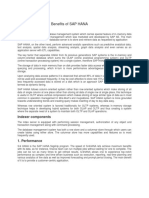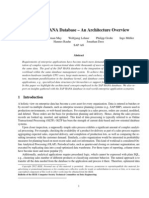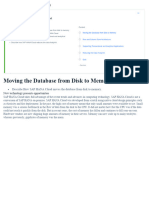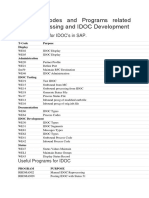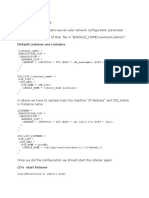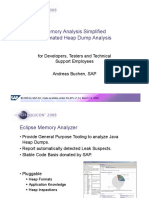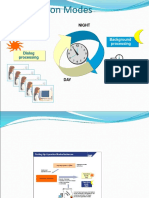0% found this document useful (0 votes)
82 views1 pageSap Database
The SAP HANA database consists of two database engines: a column-based store optimized for analytical operations on large amounts of aggregated data, and a row-based store optimized for write operations. Tables can be stored in either engine and the engine can be selected when the table is created. The row-store loads tables into memory at startup while the column-store can load tables into memory either at startup or on demand. Both engines share a common layer that provides data persistency and changes are written to persistent storage through automatic savepoints.
Uploaded by
Subramani SambandamCopyright
© © All Rights Reserved
We take content rights seriously. If you suspect this is your content, claim it here.
Available Formats
Download as DOCX, PDF, TXT or read online on Scribd
0% found this document useful (0 votes)
82 views1 pageSap Database
The SAP HANA database consists of two database engines: a column-based store optimized for analytical operations on large amounts of aggregated data, and a row-based store optimized for write operations. Tables can be stored in either engine and the engine can be selected when the table is created. The row-store loads tables into memory at startup while the column-store can load tables into memory either at startup or on demand. Both engines share a common layer that provides data persistency and changes are written to persistent storage through automatic savepoints.
Uploaded by
Subramani SambandamCopyright
© © All Rights Reserved
We take content rights seriously. If you suspect this is your content, claim it here.
Available Formats
Download as DOCX, PDF, TXT or read online on Scribd
/ 1













